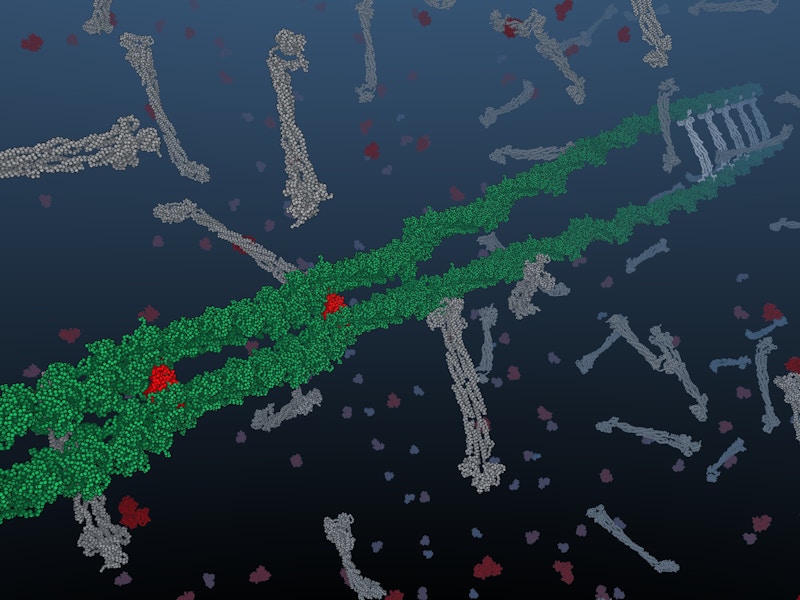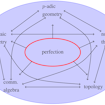
Simons Foundation Funds Center for Computational Physical Chemistry at NYU
The future relies on chemistry. Advancements in computation mean that theoretical chemistry — which has long played second fiddle to experimental chemistry — is now poised to complement or even surpass what’s achievable with modern experiments. As a result, the burgeoning field of computational physical chemistry has the potential to spur unprecedented advances in batteries, medicine, desalination and even environmentally friendly insecticides.
With these goals in mind, the Simons Foundation is pleased to announce the establishment of the Simons Center for Computational Physical Chemistry at New York University. The foundation will support the new center with $2 million per year for five years with the possibility of renewal for an additional five years.
“Computation has become an equal partner to experiment,” says Mark Tuckerman, a professor of chemistry and mathematics at NYU and chair of the university’s chemistry department. “In just the last decade, we’ve seen the field advance to a point where it’s actually possible to predict with computational methods the outcome of an experiment before the experiment is done. That’s why now is the time to seize on what computation can achieve and see how far we can push it.”
The Simons Center for Computational Physical Chemistry presents a unique opportunity for the field, says NYU chemistry professor Zlatko Bačić. “There are not too many sources, especially not in theoretical areas, where you can get such generous support that can lift things to a new level,” says Bačić, who will serve as the center’s first director. “We’ll be able to pursue research that is maybe even a bit risky that we wouldn’t have the resources otherwise to pursue. That’s important if we want to reach a new level of understanding.”
Bačić and Tuckerman will be among the core faculty members at the new center along with NYU professors Glen Hocky, Stefano Martiniani, Tamar Schlick and Yingkai Zhang as well as affiliates from other NYU Arts & Science departments and the university’s Courant Institute of Mathematical Sciences. In addition, the center will host postdocs, students and visiting scientists.
The center aims to be a hub for computational physical chemistry that spans many disciplines — mathematics, physics, chemistry, biology, computer science. The interdisciplinary nature of the center is appropriate because chemistry itself is often called “the central science,” says Hocky.
“Chemistry sits between physics and biology,” he says. “Physical chemistry in particular seeks to develop from the core principles of physics an understanding of how molecules behave and interact in concert, giving rise to complex phenomena seen in materials science and biology.”
The new center will bring physics-based approaches to chemistry problems in three broad areas: external control of living cells; sustainability in chemistry and materials science; and elucidating the quantum behavior of systems at interfaces and in confined spaces. Scientists at the center will also develop and refine computational and mathematical tools such as machine learning to spur further advancements.

Researchers at the new center already have numerous lines of research underway within these areas. For instance, Hocky and his colleagues are working on controlling the behavior of living cells by changing the surrounding environment; for example, they are probing the behavior of molecules in bacterial membranes by mechanically stressing the cells. Those insights could help engineers develop bio-inspired materials or living systems with new functionalities. The researchers have shown that the same techniques can be applied in the pharmaceutical industry, where they can help determine the likelihood of drug failure and extend the shelf life of medications.
Other research projects aim to meet the growing demand for chemicals, materials and energy. For example, Tuckerman and others are using computational tools to develop better batteries that are less toxic to the environment. Other projects focus on improving ‘contact insecticides’ that can fight the spread of diseases carried by fruit flies and mosquitoes with less harm to innocent bystanders such as bees. The researchers are exploring how different crystal structures of the same insecticide molecule knock down the bad bugs while minimizing environmental impact.
Bačić and his colleagues are studying what happens along the surfaces of materials or in confined spaces such as the pores of fuel cells and water desalination membranes. While commonplace in materials science, predicting behavior across all scales is deceptively tricky. “It turns out, size really matters,” Bačić says. “In physical chemistry, your methods have to span very large scales — from atomic to macroscopic and from picoseconds to seconds and minutes.”
The core faculty members are bringing their own projects to the new center while forging new collaborations. They’re also excited to see what new lines of research the center’s independent postdoctoral fellows will pursue. Unlike most academic environments, where postdocs are constrained within existing grants, the Simons Center for Computational Physical Chemistry will allow postdocs to chart their own course. “Postdocs will be free to choose their own field,” Bačić says. “Given independence and resources, what can you achieve? That’s a very rare opportunity so early in their career.”
The Simons Center for Computational Physical Chemistry also hopes to be a positive force within the larger scientific community. The center scientists are planning to establish close collaborations with other researchers at NYU and elsewhere in the area, such as the Flatiron Institute’s Center for Computational Quantum Physics. “You really need teams to come together to solve big problems,” says Tuckerman.
The center will host workshops, provide visiting professorships, offer graduate student fellowships and run a summer school series for high school students aimed at introducing them to the field of computational physical chemistry. An essential cornerstone of the center’s plans is to promote the careers of students from underrepresented backgrounds — from high school students to graduate students to postdocs.
“We want to see a scientific workforce that resembles how America looks,” Bačić says. “If we manage to kindle the curiosity of more people, especially from traditionally underrepresented groups, then we will have strengthened greatly the scientific and technological foundation of this country.”


